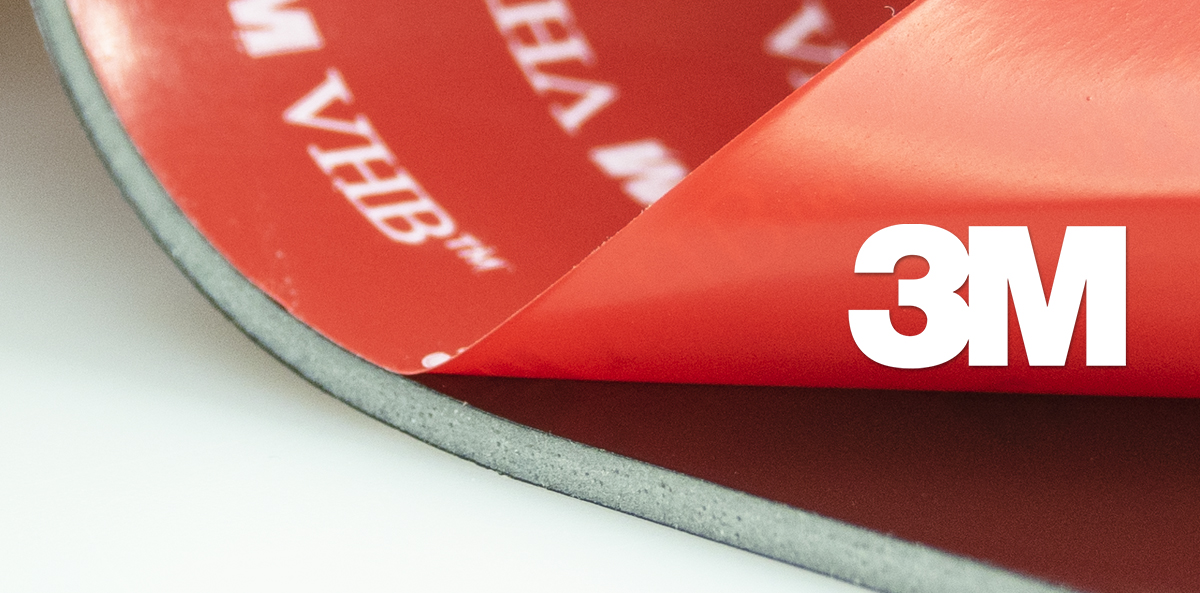
Strong double-sided adhesive tapes and assembly die-cuts
Structurally, a double-sided adhesive tape can be made of any material that has an adhesive on both sides, secured with a liner. Just to remind you, if a ‘double-sided tape’ has no carrier, it is referred to as an adhesive film. In the case of double-sided adhesive mounting tapes, the properties of the adhesive and the carrier determine the durability of the bonding and the intended use. In this article I will focus, above all, on what strong double-sided adhesive tapes are, where they are used, what advantages they have and… why there is no universal product. You will also read here how we have solved the customer’s problem by selecting the right mounting die-cuts.
In the previous article about double-sided tapes, I mentioned that due to the thickness of the carrier, tapes are conventionally divided into thin tapes and thick tapes. ‘Thick’ double-sided adhesive tapes are those with a thickness ranging from 0.35 mm up to several millimeters. The carrier is usually polyethylene (PE) foam, polyurethane (PU) foam or acrylic foam.
Double-sided adhesive tapes with acrylic adhesive are for example VHB tapes from 3M. They are intended for more demanding applications. Tapes with PE or PU foam as a carrier are rather used for less extreme applications. Rather internal ones where the bonding is not exposed to heavy loads. In the case of thick mounting tapes not only the adhesive determines the durability of the bonding. This is influenced by the material (foam) used as a tape carrier as well as its thickness. It can be assumed that the thicker the foam is the weaker the bonding can be as the foam may burst if too much force is applied.
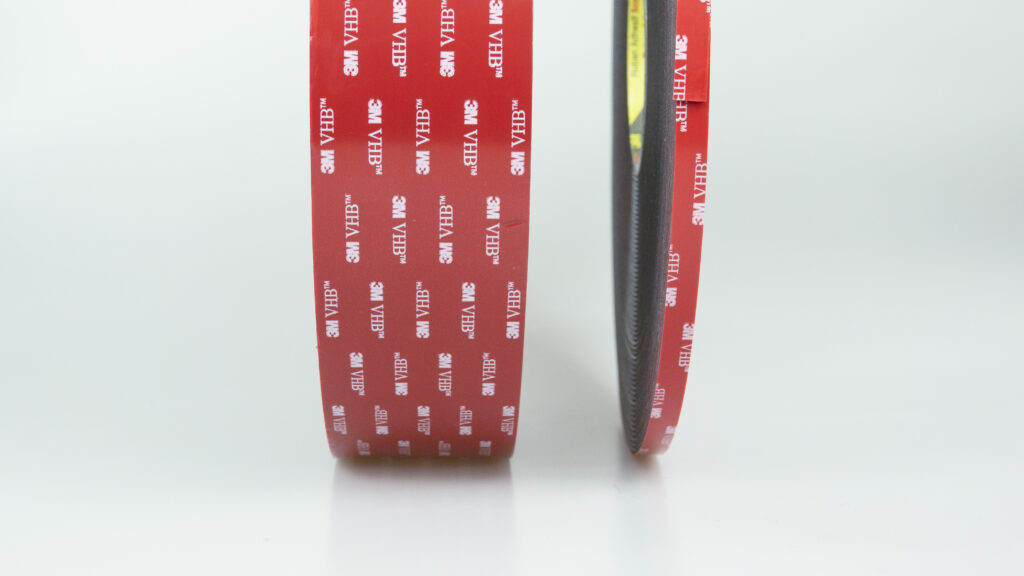
Why do we use strong, thick double-sided adhesive mounting tapes?
- permanent bonding of two elements
- vibration damping
- tight bonding
- compensating the coefficient of thermal expansion
- possibility of using a die-cut prepared to the dimensions of the elements to be bonded.
Example of application of mounting die-cuts made of ‘thick’ double-sided adhesive mounting tapes:
A well-known manufacturer of electrical fittings, wanting to launch a series of exclusive switches and sockets to the market, asked us for help in selecting the material that would permanently bond two parts of the product. It was expected to simultaneously ensure a sufficiently durable bonding and the appropriate level of dirt and humidity tightness.
The customer specified the dimensions and shape of the die-cut as well as its maximum thickness. Materials to be bonded were also specified. The customer provided the required quantity of products for testing in our laboratory.
For this solution we suggested an acrylic VHB tape manufactured by 3M. The entire thing had to be made in such a way as to ensure easy and fast positioning of the die-cut on the bonded elements. The whole bonding process could not last more than 5 seconds. Easy positioning was achieved by preparing appropriate notches on the liner.
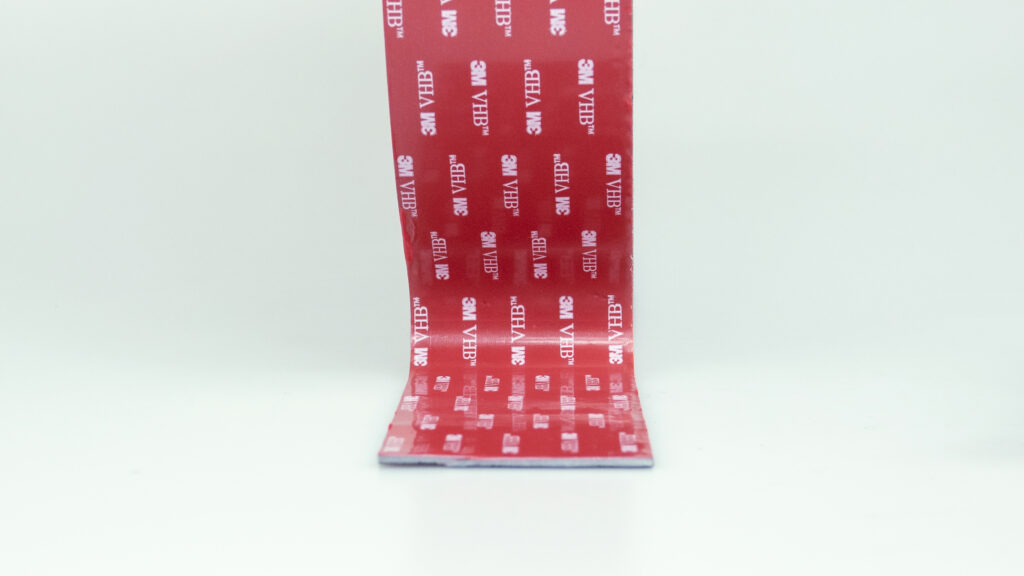
The suggested solution met the customer expectations relating to the durability of the bonding, application time and tightness requirements.
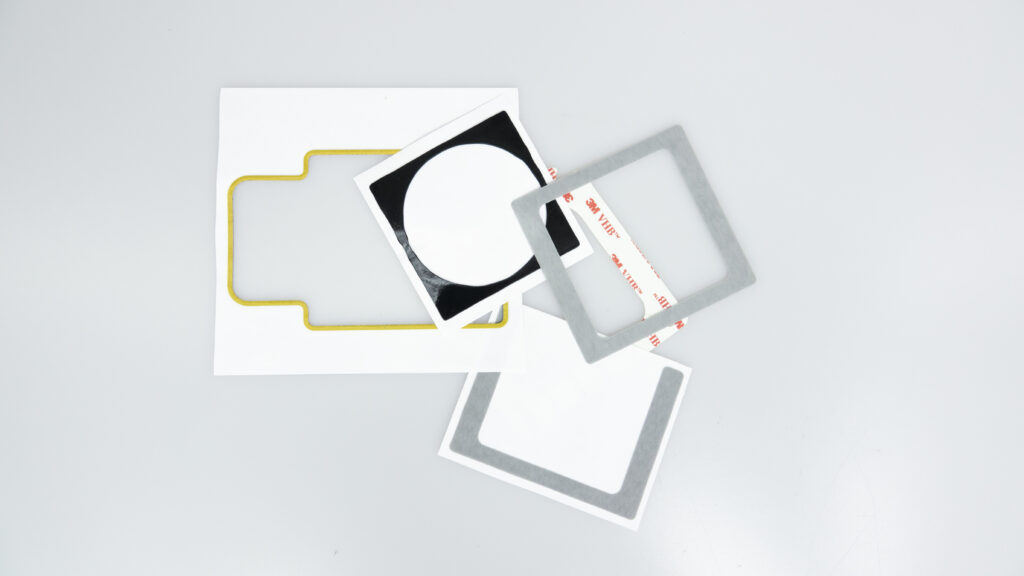
Thick double-sided adhesive tapes are not only used in industrial applications. These are also products which are commonly used to:
- mount mirrors
- mount decorative panels
- mount furniture handles
- mount hooks for clothes or pictures.
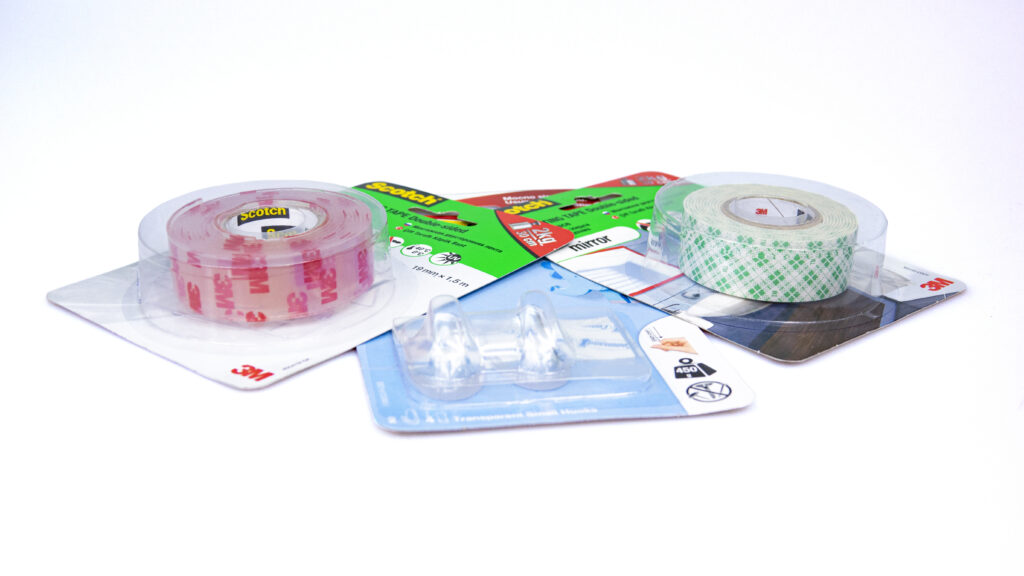
Why do we use adhesive tapes?
- an adhesive layer of equal thickness on the whole surface of the elements being bonded
- quick time of tape or die-cut application
- clean and aesthetic bonding through adjustment of the tape width or dimensions of the die-cut to the design
- immediate bonding of the adhesive
- possibility of bonding materials of different physical and chemical properties
- they form a tight bonding
- they prevent the moisture ingress – the bonding is made with the use of tapes with a synthetic carrier
- clean and aesthetic bonding
- clean working environment in comparison with the use of adhesives in the form of liquid or paste
- they reduce the weight of the product if screw joints can be replaced with tapes.
There is no universal product in this area
Responding to our customers’ needs, we use materials from many renowned manufacturers. We approach each project individually so that the solution can be adjusted to the properties of materials to be bonded and conditions in which the bonding will work.
